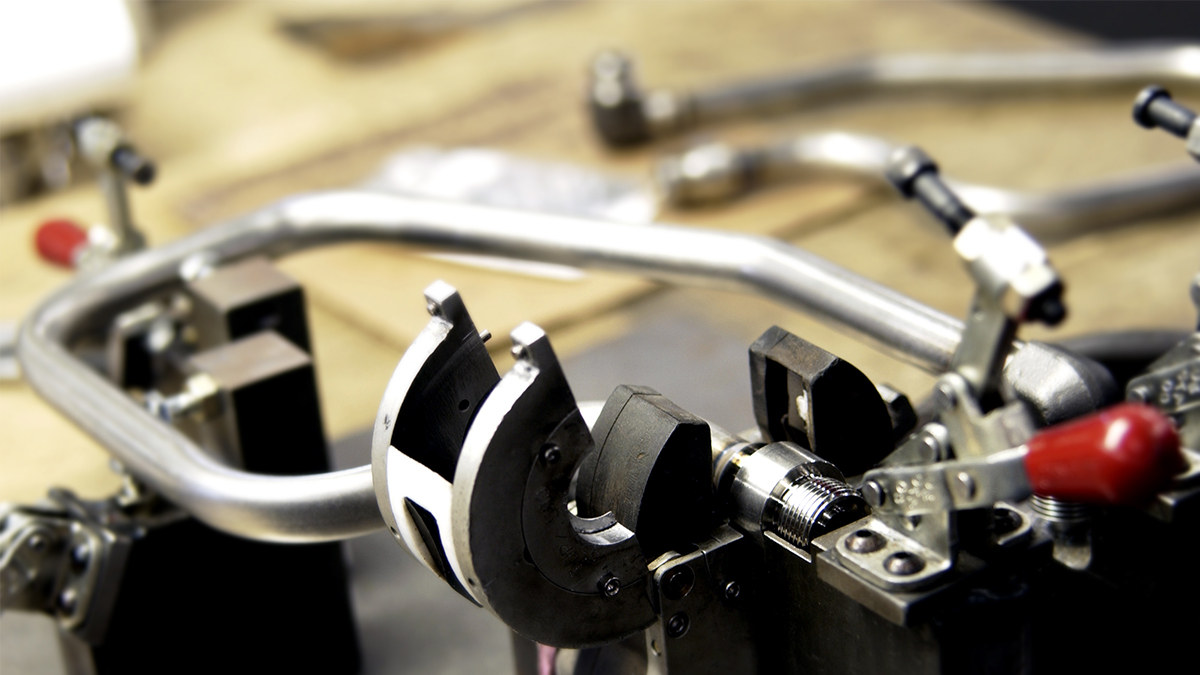Stamp press technology, also known as stamping or pressing, is a manufacturing process that utilizes a press to shape or cut materials into desired forms. This process involves the use of a die and a punch to form or cut the material, creating intricate shapes with high precision. Widely employed for mass production due to its speed, accuracy, and repeatability, this process is a crucial part of modern manufacturing.
The roots of stamp press technology trace back to ancient civilizations, where blacksmiths employed rudimentary forms of pressing to shape metals. However, it wasn't until the Industrial Revolution that stamp press technology saw significant advancements. Over the years, technological innovations have transformed stamping from a manual process into a highly automated and efficient method.
Press Structure and Mechanisms
Stamping presses typically consist of a sturdy frame, bolster plate, bed, vertically moving ram or slide, power source, transmission, and control system. The press frame provides structural support, while the bolster plate supports the die. The die cushion assists in absorbing shocks, ensuring smooth operation. Power sources vary, ranging from mechanical to hydraulic and pneumatic, depending on the specific requirements of the application.
Stamp presses operate through a series of precise movements:
Feeding: Raw material is fed into the stamping press in the form of coils or sheets.
Tooling Setup: Dies and punches are installed, defining the shape and dimensions of the final product.
Stamping Operation: The press exerts force on the material, causing it to deform or cut according to the tooling design. Different types of stamp press machines perform various key operations such as blanking, piercing, forming, and coining, allowing for versatile manufacturing capabilities.
Ejection: The finished component is ejected from the press, and the process repeats.
Mechanical, hydraulic, and pneumatic presses each meet various manufacturing requirements. Mechanical presses are suitable for high-speed operations, while hydraulic presses provide better control for intricate forming processes. Pneumatic presses are preferred for applications requiring a clean and quiet working environment. Each type has its unique advantages, making stamp press technology adaptable to diverse manufacturing needs.
Materials, Tooling, and Applications
Stamp press technology is utilized for shaping metals, including steel, aluminum, copper, and alloys, as well as plastics and composites. Dies and pinches are precision-engineered for optimal results with suitable materials. The choice of materials and tooling depends on the application, material properties, and production volume.
Stamp presses are employed in the manufacturing of automotive parts, electronic devices, and intricate components for household appliances. They offer high-speed production, cost-effectiveness, and precision. Their main limitations include material thickness constraints and high initial tooling costs.
Stamp Press Technology Developments
Recent advancements in stamp press technology prioritize speed, precision, and versatility. Key transformations include improved control systems, high-speed stamping, and innovative tooling designs for enhanced precision and efficiency. Quick-change tooling systems bring flexibility to adapt to evolving production needs.
Artificial intelligence enhances stamping processes with predictive maintenance, real-time quality control, and adaptive tooling adjustments. Laser-guided die alignment, smart sensors, and high-speed servo systems contribute to unprecedented accuracy. Real-time monitoring and diagnostics enable prompt issue identification and resolution for efficient operations.
Automation and Robotics
Stamp press technology is evolving with a focus on automation and robotics. Automated systems for loading, unloading, and tool changes streamline operations, reducing manual intervention. This not only boosts efficiency but also addresses the growing demand for unmanned production lines, driven by the need for efficiency, cost reduction, and improved safety in stamping processes.
Precision and Miniaturization
With the growing demand for smaller and more intricate parts, stamp press technology is evolving to meet precise requirements. Miniaturized dies, advanced lubrication systems, and improved material handling techniques contribute to achieving high precision in the production of intricate components. This trend is particularly prominent in industries such as electronics, medical devices, and precision engineering.
Customization, Flexibility, and Industry 4.0
With the increasing demand for smaller and more intricate parts, stamp press technology is evolving with the integration of quick changeover systems, modular tooling, and adaptive control software that enables customizable solutions, enhances flexibility in production, and reduces downtime during setup. Embracing Industry 4.0 principles, stamp press machines incorporate IoT devices for real-time data collection, predictive maintenance, and improved overall equipment effectiveness. Automation features, including adaptive control and self-optimizing algorithms, enhance efficiency and minimize downtime in production.
Stamp Press Technology stands as a cornerstone in the machining industry, providing precision and efficiency in component production. Its versatility and applications across various industries make it a vital player in the world of manufacturing, with continuous advancements in technology and production.







.png)






